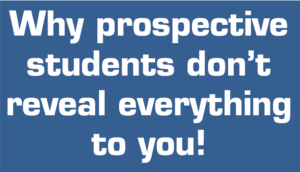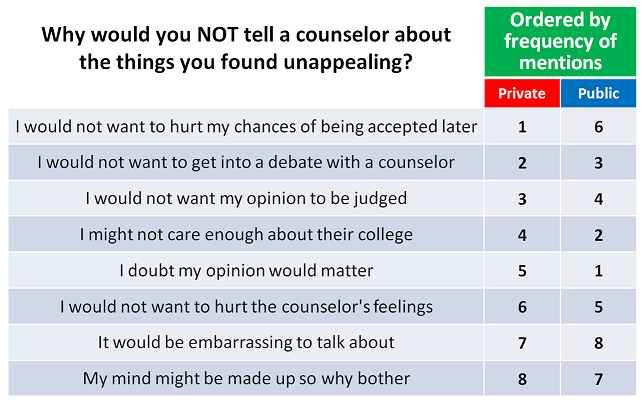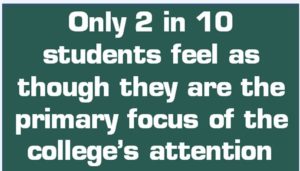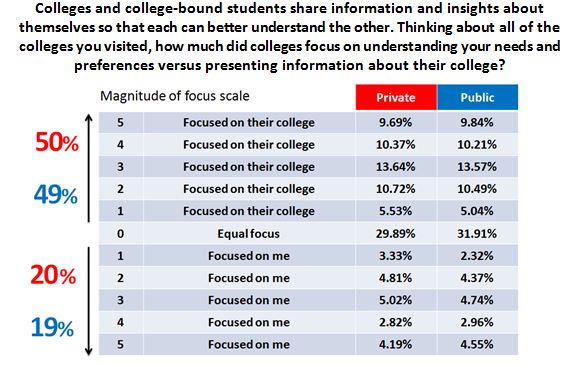During the first of a series of focus groups we conducted during the development phase of our latest study, “Hidden Influences: Revealing the unspoken perceptions that perspective students have about your college and why it matters in your ability to grow and control your enrollment,” we asked the group of college-bound students if they received many calls from admission counselors late in the recruiting cycle trying to “close the sale.”
“Of course,” said most of the students in the group.
“Do you take their calls?” I asked.
“Not if I don’t have to,” answered one of the students to laughter and agreement from the group.
“When a counselor reaches out to you and you’re not sold on their college, what do you tell them?” I asked.
One student blurted out, “I just tell them they cost too much or I’m getting more financial aid at another college.” Other students in the focus group acknowledged that they say the same thing.
“So, cost and financial aid is the reason?” I asked.
“Not really,” one student said. “But it gets them off the phone and they don’t call you back. I mean what can they say? They can’t give you any more money.”
Another joined in, “Yeah, I call it the ‘Cost Card.’ It’s pretty good at shutting down the conversation when you play it.”
We wanted to know just how pervasive is playing the “Cost Card” as a way to end the college selection conversation? So we asked 18,000 college-bound students in our national study, “Have you ever told a college that your decision to enroll elsewhere was because of cost or a better financial aid package when, in fact, the true reason was something else?”
We found that 2 in 10 students nationwide are using this diversion/excuse with the counselors they are talking to. They are telling you cost and financial aid is the reason for not enrolling when, in truth, the real reason is something else.
This finding has two critical implications.
First, private and public colleges across the United States are hearing this false excuse and believing that their tuition and aid is non-competitive when, in fact, the real reason they are losing enrollments is because of some other issue(s) that remain unidentified. Were colleges able to uncover the real reasons why a student is hesitant to enroll, they may find it easy to fix, change, or improve the thing(s) that dissuade a student from enrolling.
The second implication here is equally compelling: Students have been conditioned to use cost as an excuse because admission counselors aren’t skilled at uncovering their real concerns and objections. For college-bound students and their parents, the college search can be a real roller coaster ride and it is inevitable that questions and concerns are going to arise. For the savvy admission counselor (or faculty member, tour guide, or student caller), unmasking those concerns are opportunities to turn an unconvinced applicant into an excited enrolled student.
What should a counselor do when the Cost Card is played?
The first way to deal with the cost excuse used by a prospective student is to test the validity of it. It’s a pretty simple process, really, that any counselor can learn and use to isolate the real reason behind a prospective student’s hesitancy to enroll. The counselor can simply level the playing field by asking the student, “Let’s just imagine that our cost and aid package were equal to that of the college you are comparing us to. Would you rather enroll here?”
The counselor is going to get one of two types of answers to this question. One variation is the student sincerely regretting that he or she won’t be able to attend because of cost. “I absolutely love your campus,” the student might say. “I loved the people and the professors and the current students and the atmosphere on your campus!”
Another variation is less enthusiastic and convincing. “Yeah, I liked everything and the people were nice. My parents think it’s a good school.”
The former response clearly indicates that it’s a money issue. The latter response indicates it’s something else. And, when it is something else, it’s the counselor’s job to probe and uncover the non-cost objections and concerns the student may have. The counselor may find that a prospective student’s barrier to enrolling is based on a false assumption they may have about the college that, if corrected, would make a world of difference. It could be something based on a fear that the student has about your college; that they won’t fit in with the other students, that they will be too far from (or too close to) home, etc…. Whatever the real reason is, a counselor must uncover it so that it can be addresses and, hopefully, overcome. Doing so best serves both the student and the college.
Strategies and practices for uncovering and overcoming objections are beyond the scope of this blog post but we can help elsewhere. You’ll find videos on our website and YouTube channel that provide guidance and best practices for uncovering the objections and concerns that prospective students have during the college shopping and selection process. I encourage you to look HERE and HERE for help.
Of course, feel free to call us. We’re happy to provide resources and help.
We are preparing to launch our next study!
Each year our national co-sponsored studies attract even more colleges that want to “get in” on the new and different insight we give them about their prospective students and students nationwide. If you’d like information about the topic of our next study, and the benefits you receive as a co-sponsor, be sure to CLICK HERE now to be alerted soon when we put together our next group of co-sponsors.
You can also CLICK HERE to receive an advance copy of the Hidden Influence study report prior to its national release.
Continue the conversation on Twitter @LongmireCo. Be sure to Subscribe to Versions of Conversion today so you don’t miss any of this highly-valuable information.
 Rick Montgomery is as an Enrollment Strategist at Longmire and Company. With over 20 years in higher education marketing, he brings an innovative and dynamic approach to helping colleges and universities meet their enrollment goals. Rick can be reached at 913/492.1265 x.708 or via email at rmontgomery@longmire-co.com.
Rick Montgomery is as an Enrollment Strategist at Longmire and Company. With over 20 years in higher education marketing, he brings an innovative and dynamic approach to helping colleges and universities meet their enrollment goals. Rick can be reached at 913/492.1265 x.708 or via email at rmontgomery@longmire-co.com.



 matters in your ability to grow and control enrollment,” we asked over 18,000 college-bound students whether they felt the colleges they considered were more focused on understanding their needs and preferences or more focused on presenting information about their institutions.
matters in your ability to grow and control enrollment,” we asked over 18,000 college-bound students whether they felt the colleges they considered were more focused on understanding their needs and preferences or more focused on presenting information about their institutions.


